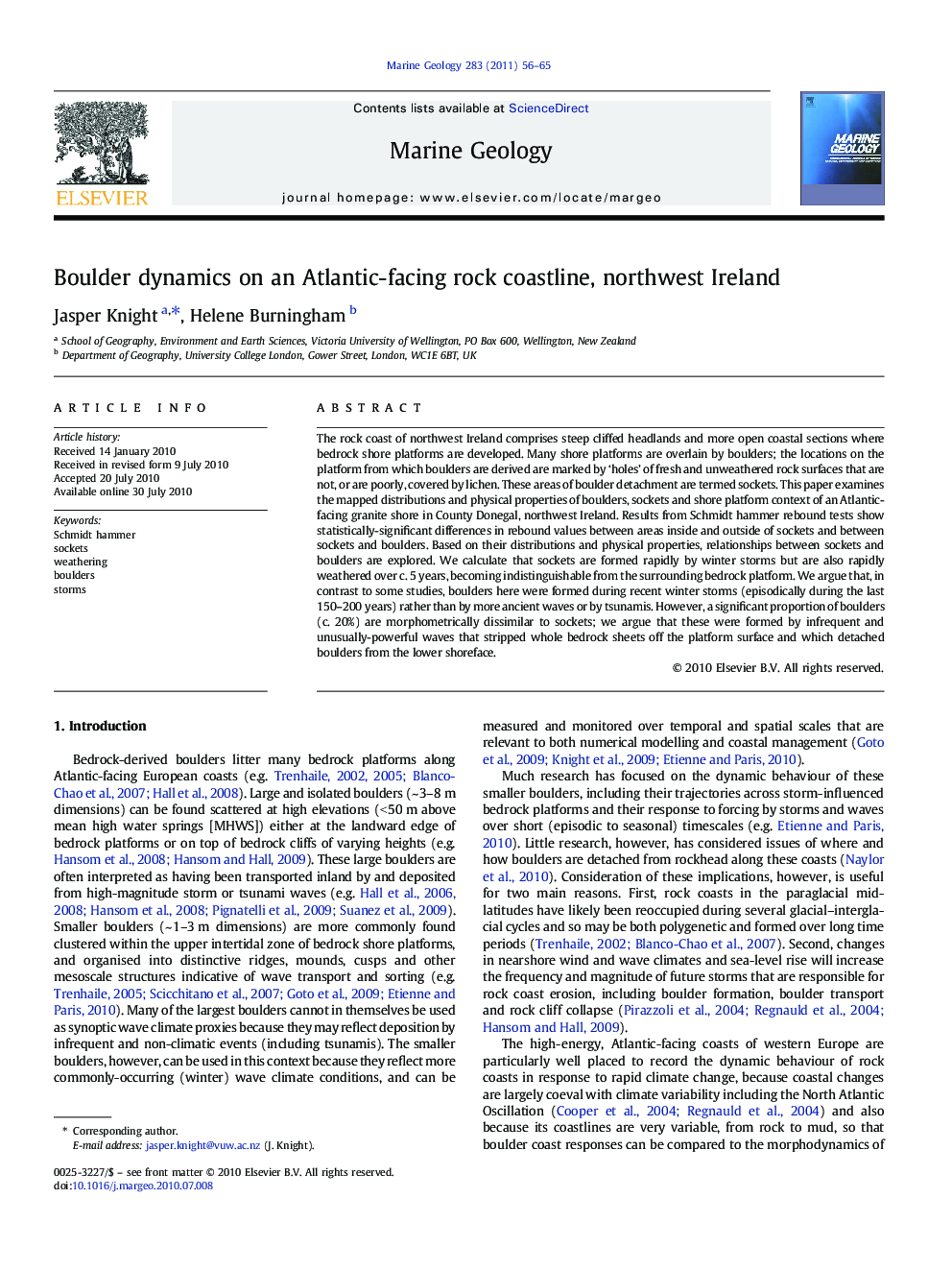| Article ID | Journal | Published Year | Pages | File Type |
|---|---|---|---|---|
| 4718726 | Marine Geology | 2011 | 10 Pages |
The rock coast of northwest Ireland comprises steep cliffed headlands and more open coastal sections where bedrock shore platforms are developed. Many shore platforms are overlain by boulders; the locations on the platform from which boulders are derived are marked by ‘holes’ of fresh and unweathered rock surfaces that are not, or are poorly, covered by lichen. These areas of boulder detachment are termed sockets. This paper examines the mapped distributions and physical properties of boulders, sockets and shore platform context of an Atlantic-facing granite shore in County Donegal, northwest Ireland. Results from Schmidt hammer rebound tests show statistically-significant differences in rebound values between areas inside and outside of sockets and between sockets and boulders. Based on their distributions and physical properties, relationships between sockets and boulders are explored. We calculate that sockets are formed rapidly by winter storms but are also rapidly weathered over c. 5 years, becoming indistinguishable from the surrounding bedrock platform. We argue that, in contrast to some studies, boulders here were formed during recent winter storms (episodically during the last 150–200 years) rather than by more ancient waves or by tsunamis. However, a significant proportion of boulders (c. 20%) are morphometrically dissimilar to sockets; we argue that these were formed by infrequent and unusually-powerful waves that stripped whole bedrock sheets off the platform surface and which detached boulders from the lower shoreface.
